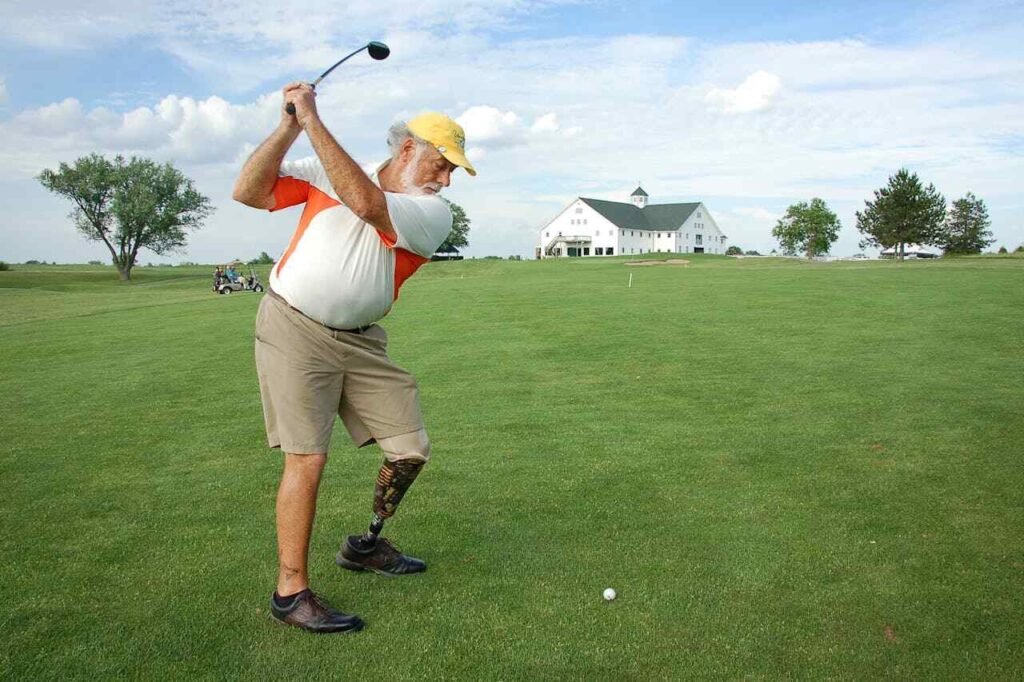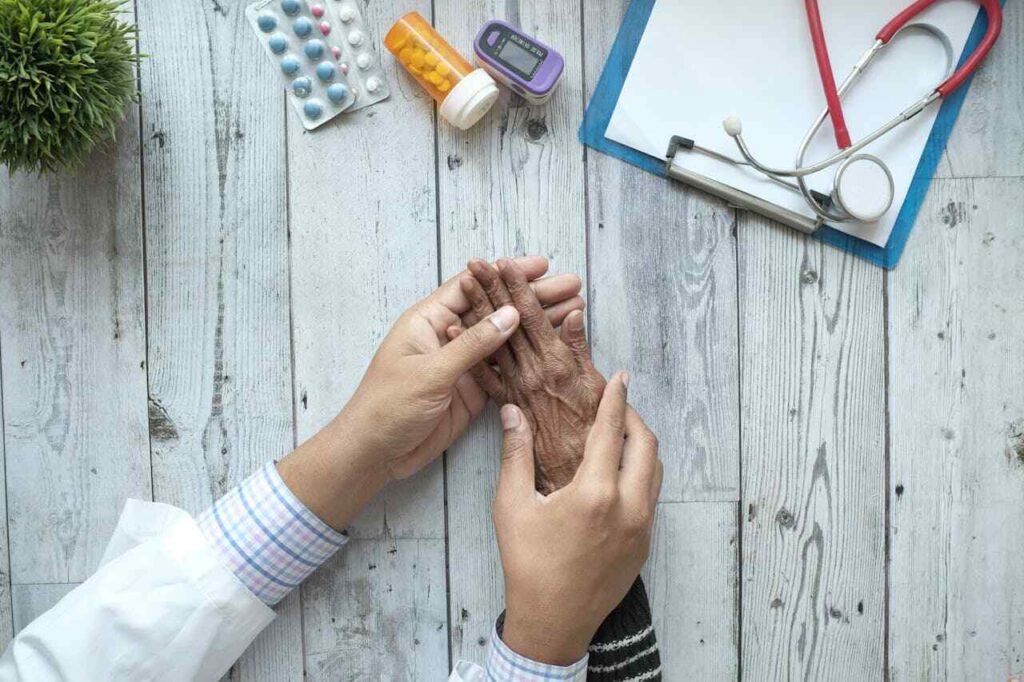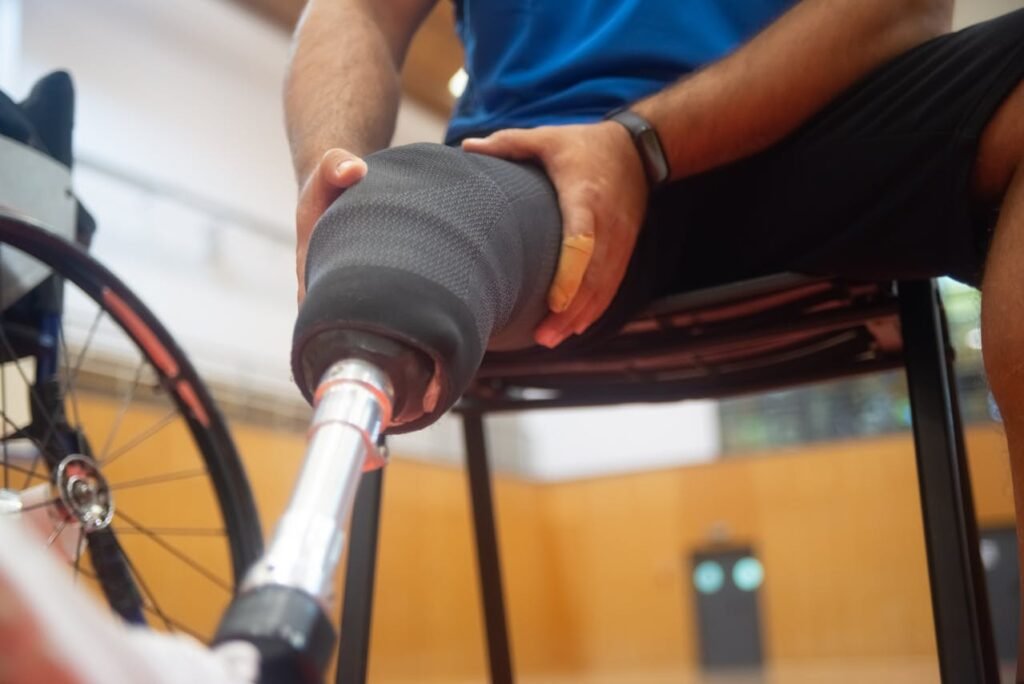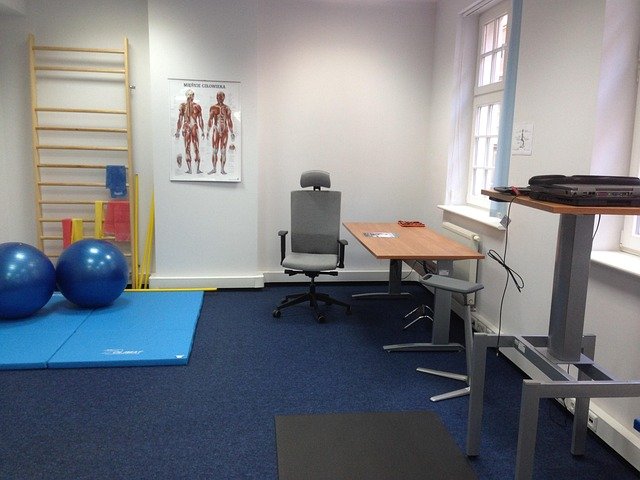Staying active is one of the best gifts you can give yourself—no matter your age. But for many seniors using prosthetic legs, traditional workouts can feel intimidating or tiring. The fear of losing balance, discomfort while standing for long, or simply not knowing where to start can make exercise seem out of reach.
That’s where chair-based workouts come in. They are simple, safe, and surprisingly effective. With just a sturdy chair and a few minutes a day, you can strengthen your muscles, improve balance, boost flexibility, and feel more confident with your prosthesis.
At RoboBionics, we have seen how gentle movement transforms lives. Seniors who once felt hesitant to move now smile through their routines, feeling stronger and freer each day. This guide will walk you through easy, practical chair-based exercises created especially for seniors with prosthetic legs. You’ll learn how to move safely, build endurance, and rediscover the joy of staying active—all from the comfort of your chair.
Why Chair-Based Workouts Are Perfect for Seniors Using Prosthetics
Safety Comes First

For seniors with prosthetic legs, safety is the first concern when thinking about exercise. Standing routines can feel risky, especially if balance or leg strength is limited. Chair-based workouts remove that fear completely.
You stay seated, which means no risk of falling or losing balance. Your prosthesis stays supported, and you can focus on movement instead of worrying about standing stability. This allows your body to move freely and confidently.
Safety creates comfort, and comfort builds consistency—the most important part of staying active.
Easy on the Joints
Aging joints deserve gentle care. Many traditional exercises put pressure on the knees, hips, and ankles, which can cause pain or stiffness. Chair workouts offer a softer alternative.
Because the chair supports your body weight, your joints get to move without extra stress. This means you can enjoy the benefits of exercise—stronger muscles, better flexibility, and smoother circulation—without soreness or strain.
For prosthetic users, this also prevents unnecessary pressure on the residual limb or socket. Gentle movement keeps your body strong without discomfort.
Strength and Confidence Go Hand in Hand
Chair-based workouts don’t just build muscle—they build confidence. When you move safely and see improvement, you start trusting your body again.
Even small changes, like lifting your legs more easily or sitting taller, remind you that progress is happening. Every session boosts independence and reduces the fear of losing balance.
Confidence grows quietly through repetition. The more often you move, the more natural and joyful it feels.
Suitable for Every Fitness Level
Whether you’re just starting your fitness journey or have been active for years, chair workouts meet you where you are. You can adjust every movement to your comfort level.
If your prosthesis feels heavy or you’re recovering from surgery, start with simple upper-body stretches. If you feel stronger, add leg movements or light weights.
The beauty of these exercises is their flexibility. They’re made to fit you—not the other way around.
Preparing for Your Chair Workout
Choosing the Right Chair
Your chair is your workout partner, so it needs to be stable and sturdy. Pick one without wheels or armrests, and make sure it won’t slide on the floor.
The seat should be flat and firm, allowing your feet to rest comfortably on the ground. Ideally, your hips and knees should be at the same height when sitting.
Avoid soft, cushioned chairs—they can sink and affect posture. A firm surface keeps your movements strong and controlled.
What to Wear
Wear clothes that let you move freely. Soft, breathable fabrics are best. Avoid tight waistbands or stiff materials that restrict motion.
Choose shoes that provide good grip and support. If you prefer to exercise barefoot, make sure the floor surface is clean and not slippery.
Comfort in what you wear helps your body move smoothly and prevents distraction during your routine.
Warming Up Gently
Before starting, take a few minutes to warm up. Warm-ups help blood flow and loosen muscles, reducing the chance of cramps or stiffness.
You can start with simple breathing exercises. Sit tall, breathe in through your nose for three seconds, and exhale slowly through your mouth. Repeat this a few times to relax your shoulders and neck.
Then, rotate your wrists, ankles, and shoulders in slow circles. These small movements prepare your joints for gentle motion and help you connect with your body.
Setting the Right Mindset
A calm and positive mindset makes your workout more enjoyable. Think of this as a gift to yourself, not a task. You’re not trying to be perfect—you’re simply giving your body the care it deserves.
It’s okay to move slowly. It’s okay to rest. What matters most is showing up, moving with intention, and finishing each session feeling better than when you started.
Consistency builds strength. A few minutes each day can bring remarkable changes over time.
Starting with Upper-Body Movements
Shoulder Rolls and Arm Circles

Start your workout by loosening your shoulders. Sit upright with your feet flat on the ground. Gently roll your shoulders backward in a circular motion. Do this five to ten times, then switch direction.
Next, extend your arms out to your sides and draw small circles in the air. Gradually make the circles larger, then smaller again. This strengthens your shoulders and improves mobility in your upper body.
Keep your movements controlled and your breathing steady. These simple motions wake up your arms and shoulders for the rest of your workout.
Seated Chest Opener
Poor posture often causes stiffness and discomfort. This exercise opens your chest and strengthens your back muscles.
Sit straight, place your hands behind your head, and pull your elbows gently backward while lifting your chin slightly. Feel the stretch across your chest. Hold for a few seconds, then relax.
Repeat this several times to release tension and improve posture. You’ll feel taller and more open after just a few rounds.
Arm Raises with Light Resistance
If you have light dumbbells or even water bottles, use them here. Hold one in each hand with your arms resting by your sides. Slowly raise them to shoulder height, pause, then lower them back down.
Move slowly—this is about control, not speed. You can also do this exercise without weights by simply lifting your arms and focusing on muscle engagement.
This strengthens your shoulders, arms, and upper back, making daily activities like reaching or carrying items easier.
Seated Twists for Core Activation
Your core muscles—those around your abdomen and lower back—play a key role in balance and stability. Strengthening them helps you move smoothly with your prosthetic leg.
Sit tall with your hands on your knees. Slowly twist your torso to one side while keeping your hips still. Return to the center and twist to the other side. Move gently, breathing out with each twist.
This exercise strengthens your spine and improves coordination between your upper and lower body.
Engaging the Core and Lower Body
Seated Leg Lifts
Sit toward the edge of your chair with your back straight. Place your feet flat on the floor. Slowly lift one leg up, hold it for a few seconds, then lower it down. Switch to the other leg.
If your prosthesis is attached, lift gently without forcing movement. The goal is smooth, controlled motion that strengthens your thighs and hips.
Over time, this exercise helps you walk more comfortably and improves control over your prosthetic limb.
Knee Extensions for Strength
Sit tall with both feet on the floor. Straighten one leg slowly until it’s parallel to the ground, hold for two seconds, and then lower it. Switch legs.
This exercise strengthens your quadriceps—the muscles at the front of your thighs—which are essential for balance and walking.
If you want an extra challenge, loop a small resistance band around your ankles. Even without it, consistent practice will build stability and confidence.
Seated Marching
Sit up straight with your hands resting lightly on the sides of the chair. Lift one knee as if you’re marching, then lower it and lift the other.
March slowly and rhythmically, keeping your chest tall and your core engaged. This improves blood flow in your legs and enhances coordination.
Seated marching is especially helpful for seniors who are learning to balance better with prosthetic legs. It trains your muscles to move in harmony again.
Heel and Toe Taps
Place your feet flat on the floor. Lift your toes while keeping your heels down, then lower your toes and lift your heels. Continue alternating this motion slowly.
This strengthens your calves and ankles while improving flexibility in your feet. For prosthetic users, it also helps the sound leg maintain mobility and endurance.
Small, repetitive movements like these keep circulation healthy and reduce stiffness from sitting too long.
Strengthening the Upper and Lower Body Together
Combining Arm and Leg Movements
Once you’re comfortable with the basic exercises, start combining arm and leg movements. This helps your brain and body coordinate better while giving you a full-body workout.
Sit tall, raise one arm overhead while lifting the opposite leg slightly off the ground. Lower both, then switch sides. Move slowly, keeping your breathing steady.
This gentle cross-body motion strengthens your shoulders, thighs, and core while improving coordination between both sides of your body. Over time, it helps make everyday movements smoother and more natural.
Seated Push and Pull Motion
This exercise mimics the natural rhythm of pushing and pulling during walking or using your arms for support. It builds upper-body endurance and strengthens your chest and back muscles.
Hold your hands at chest height with your elbows bent. Slowly push your arms forward until they’re straight, then pull them back toward your chest.
You can use light resistance bands or simply your body weight. The focus is on steady movement, not force. Feel your shoulder blades squeeze together as you pull back—it’s a wonderful way to improve posture and build control.
Inner Thigh Squeeze
Place a small pillow, rolled towel, or soft ball between your knees while seated. Gently press your knees together, hold for five seconds, and release.
This strengthens your inner thighs, which play a crucial role in stabilizing your hips when using a prosthetic leg. It also keeps your knees aligned and reduces the risk of imbalance when standing.
Do this exercise slowly. You should feel the muscles engage but not strain. It’s a small movement with big benefits for leg control and stability.
Core Forward Reach
Sit tall with your feet flat on the floor. Extend both arms in front of you. Slowly lean forward a few inches, keeping your back straight and your abdominal muscles tight. Return to the upright position.
This simple motion strengthens your core muscles and teaches your body to control forward movement—something essential for safe walking and standing.
Keep your movements smooth and your breathing calm. This small exercise builds powerful support for your lower back and improves balance while sitting and standing.
Flexibility and Relaxation Routines
Gentle Neck and Shoulder Stretch

Stiffness often starts in the neck and shoulders, especially for those who sit for long periods. Loosening these muscles helps you feel light and relaxed.
Sit comfortably and let your shoulders drop naturally. Tilt your head to one side, feeling a stretch along the opposite neck. Hold for a few seconds, then switch sides.
Afterward, roll your shoulders backward in slow circles. Breathe deeply as you move. These stretches relieve tension and improve upper-body flexibility.
Side Body Stretch
Sit upright with your feet grounded. Place one hand on the side of your chair for support and raise the other arm overhead. Gently lean toward the side, feeling the stretch along your ribs and waist.
Hold for a few seconds, return to the center, and switch sides.
This exercise keeps your spine flexible and helps reduce stiffness around the torso, which often builds up from long sitting or cautious walking with a prosthesis.
Hip and Back Stretch
Strong hips and a flexible lower back make sitting and walking much more comfortable. Sit toward the edge of your chair, cross one leg over the other if you can, and gently lean forward.
You should feel a gentle stretch around your hips and lower back. Hold the position for a few seconds, then relax. Switch sides and repeat.
If crossing your legs is difficult, you can simply lean forward from your hips while keeping both feet on the ground. The key is to move gently without forcing your body.
Calming Breathing to End Your Session
At the end of your workout, take a few minutes for slow breathing. Sit comfortably with your hands on your lap. Close your eyes if you like.
Breathe in deeply through your nose for four counts. Hold briefly, then exhale through your mouth for six counts. Feel your body soften and your heart rate slow.
This breathing technique relaxes your muscles and helps your body absorb the benefits of your workout. It’s also a wonderful way to build calm and focus before standing or walking.
Full Seated Workout Plan for Seniors Using Prosthetic Legs
The Beginner Routine
If you’re new to exercise or have recently started using your prosthetic leg, begin with short sessions. Ten to fifteen minutes a day is enough to build strength gradually.
Start with shoulder rolls, arm circles, and seated marches. Add light leg lifts and toe taps to activate your lower body. End with gentle breathing or side stretches to cool down.
Remember, the goal isn’t speed or intensity—it’s consistency. A slow, steady rhythm keeps your body safe and your confidence growing.
The Intermediate Routine
Once your body feels stronger, move to a slightly longer session—around twenty minutes. Combine upper and lower body exercises for balance and coordination.
For example, alternate between seated push-and-pull motions and knee extensions. Then do side stretches followed by forward reaches.
Add light weights or resistance bands to make your muscles work a little harder. Keep breathing steady and avoid rushing. Each movement should feel natural, not forced.
The Advanced Routine
For seniors who are comfortable and confident, this routine adds a touch of challenge. Aim for thirty minutes, including rest breaks.
Start with marching and leg lifts to warm up. Then move into cross-body arm and leg raises, inner thigh squeezes, and full core forward reaches.
Use light weights for upper-body work and resistance bands for your legs. Finish with a few minutes of calm breathing and neck stretches.
This version keeps your body strong, flexible, and alert while supporting long-term independence.
Adjusting the Routine for Comfort
Every person’s body is different, and prosthetic users have unique needs. You may have days when your residual limb feels tender or tired. That’s okay.
On those days, focus on upper-body movements and breathing. Movement in any form keeps your body active and your circulation flowing.
You can also break your routine into smaller segments—five minutes in the morning, five after lunch, and five in the evening. The goal is to move a little every day, not to exhaust yourself.
Integrating Chair Workouts into Daily Life
Making Exercise a Habit
The hardest part of staying active isn’t the workout—it’s remembering to do it daily. The simplest trick is to tie your exercise to something you already do.
For example, after your morning tea or evening news, take ten minutes for your chair workout. When it becomes part of your schedule, it stops feeling like an effort and becomes a natural habit.
Keep your chair in a bright, open area where you enjoy spending time. Comfort and good lighting encourage you to move more often.
Turning Routine Tasks into Mini Workouts
Everyday activities can be opportunities for small exercises. While sitting at the table, do a few heel lifts. When talking on the phone, roll your shoulders or stretch your neck.
These short bursts of movement throughout the day add up and keep your body engaged without any special setup.
Even waiting for your meal or reading can become active moments when paired with gentle leg or arm motions. Movement blends into life—it doesn’t have to feel separate.
Involving Family and Friends
Exercising with others adds motivation and joy. Invite a family member or friend to join you for chair workouts. You can move together, laugh, and encourage one another.
Having company also keeps you accountable. When you make exercise social, it stops feeling like a chore and becomes a shared activity that strengthens both body and relationships.
Mental Wellness Through Movement
The Connection Between Exercise and Mood
Physical movement doesn’t just strengthen the body—it lifts the spirit too. For many seniors using prosthetic legs, the early stages of recovery can bring feelings of frustration, self-doubt, or fatigue. Chair-based exercise offers a gentle way to rebuild both strength and self-belief.
When you move, your brain releases endorphins—natural chemicals that make you feel calmer and happier. Even ten minutes of movement can refresh your mood and clear mental fog. The slow rhythm of breathing and movement grounds you in the present moment, reminding you of what your body can still do, not what it has lost.
Over time, these moments of movement become moments of joy—simple proof that your body is capable, resilient, and alive.
Building Self-Confidence Through Small Wins
One of the most powerful effects of chair workouts is the quiet confidence they bring. Each completed session, each extra lift or stretch, is a victory. These wins might feel small, but they add up to something much greater—trust in your body again.
Every time you move safely, your brain learns that your prosthesis can be a partner, not a limitation. This trust grows slowly but steadily until it becomes second nature. Confidence doesn’t appear overnight—it’s built repetition by repetition, breath by breath.
Soon, you stop worrying about “what if I fall” and start thinking “look how far I’ve come.”
Reducing Anxiety and Improving Focus
Anxiety can make muscles tense and movements stiff. Relaxation through steady motion helps you release that tension. The focus required for each movement also trains your mind to stay calm under pressure.
If you ever feel anxious, pause and take three deep breaths before beginning your routine. Picture the chair as your anchor—a safe space where movement feels simple and secure.
Over time, these quiet moments of control and focus ripple into other parts of your life. You’ll notice yourself feeling more patient, more stable, and more confident in daily tasks.
Safety Tips for Chair Exercises
Check Your Equipment and Space
Always make sure your chair is stable before you start. Place it on a flat, non-slippery surface. If you have tiled flooring, you can put a mat under the chair to prevent sliding.
Keep enough space around you to stretch your arms and legs freely. Remove obstacles like bags, cables, or loose rugs that could get in the way.
Good lighting helps too. You should always be able to clearly see the space around your feet and chair. These simple precautions make your exercise safe and stress-free.
Listening to Your Body
Your body speaks through sensations. A gentle stretch or mild effort is fine, but pain, sharp pulling, or dizziness are signs to stop. Move at a pace that feels comfortable.
If your prosthesis feels heavy or tight, pause and readjust. Some seniors prefer to do certain exercises without wearing their prosthesis, while others keep it on for support—do what feels right for you.
Remember, rest is part of the process. Sitting back for a few seconds, taking a sip of water, and then continuing is not weakness—it’s smart self-care.
Knowing When to Ask for Help
If you’re starting a new routine, it’s always wise to consult your physiotherapist or prosthetist first. They can guide you on which exercises suit your strength, posture, and prosthetic type.
If you ever experience unusual swelling, redness, or soreness around your residual limb after exercise, stop immediately and contact your specialist. Early guidance prevents complications and keeps you moving safely.
You’re not alone in this journey—support is always within reach.
Long-Term Fitness Planning for Seniors with Prosthetics
Consistency Over Intensity
The biggest secret to success in any workout plan is consistency. It’s better to do short sessions daily than one long, tiring session once a week.
Think of your chair workout as a daily ritual—like brushing your teeth or having your morning tea. Regular movement trains your muscles and joints to stay active without overloading them.
When you stay consistent, progress feels natural. You’ll notice small but steady improvements—standing longer, walking smoother, or sitting taller. Those quiet changes are your true milestones.
Tracking Your Progress
Keeping a small notebook or journal can help you stay motivated. Write down the exercises you did each day and how you felt afterward. Over time, you’ll see your growth in both strength and comfort.
For example, if you could lift your leg only five times last month but now manage ten, that’s proof of progress. Seeing that on paper boosts motivation and builds pride in your achievements.
You can even note how your prosthesis feels after exercise. Tracking helps you understand what works best for your body and where small adjustments may be needed.
Balancing Activity and Rest
Physical growth happens when movement and rest work together. Muscles rebuild and grow stronger during recovery, not during exercise.
Take at least one rest day each week, or do a light stretching session instead of your full routine. Proper sleep and hydration also play a big role in muscle recovery and joint comfort.
Listen to your body—it will tell you when it’s ready to move and when it needs a pause. Balance brings sustainability to your efforts.
Embracing Independence Through Movement
Finding Freedom in Simple Actions

Chair-based workouts teach a powerful lesson: strength isn’t about lifting heavy weights or running marathons—it’s about being able to do what you love with ease.
Whether it’s standing up without help, reaching for something on a shelf, or walking steadily with your prosthesis, every bit of strength you gain translates to more independence.
These simple actions, once challenging, become effortless. Each time you move confidently, you reclaim a piece of freedom that once felt out of reach.
The Emotional Rewards of Staying Active
Beyond physical improvement, regular movement brings emotional strength. You start feeling more in tune with your body, more at ease with your prosthesis, and more open to exploring life again.
Energy levels rise, mood improves, and daily activities become smoother. You begin to notice moments of lightness—times when your body feels strong, your spirit feels calm, and your heart feels proud.
That feeling is worth every bit of effort you put in. It’s your body thanking you for the care and patience you’ve shown.
Sharing Your Journey
Your journey can inspire others. Many seniors hesitate to start exercising because they fear failure or think it’s too late. When they see you move with confidence and joy, they learn that strength has no age limit.
Share your story with your family, friends, or even at your local prosthetic center. Let others see that recovery isn’t just possible—it’s deeply rewarding.
Every time you move, you’re not only strengthening yourself—you’re showing others what hope looks like in motion.
The RoboBionics Promise
Technology That Supports Life
At RoboBionics, we believe that prosthetic technology should blend seamlessly with the human spirit. Our products are built with care, comfort, and affordability in mind—so every individual, regardless of age, can experience freedom through movement.
Our flagship product, the Grippy™ Bionic Hand, is a symbol of Indian innovation made accessible to all. With over 60 locally manufactured components and our patent-pending Sense of Touch™ technology, we’ve brought advanced prosthetics to those who need them most.
We also design rehabilitation tools and devices like the BrawnBand and our gamified rehabilitation app to help users rebuild strength through engaging, science-backed methods.
We understand that every movement—no matter how small—is part of a larger story of recovery.
Partnering in Your Progress
Our work doesn’t end when you receive a prosthesis. We continue to stand beside you through rehabilitation, balance training, and confidence-building programs.
By collaborating with clinics and therapy centers across India, we ensure that our users have access to ongoing support and professional guidance.
If you or someone you love is ready to start a safer, more active life with a prosthetic, we invite you to schedule a demo session at robobionics.in/bookdemo.
Together, we can help you rediscover the joy of movement—comfortably, confidently, and without fear.
Closing Thoughts
Movement is life. For seniors using prosthetic legs, that movement might start small—perhaps a simple stretch, a leg lift, or a gentle breath. But every one of those moments matters.
Chair-based workouts are not just exercises; they’re steps toward independence, self-respect, and freedom. They remind you that strength doesn’t fade with age—it simply takes a new form.
You’ve already come so far by learning to walk again, by trusting your prosthesis, and by choosing to move when it would have been easier to stop.
Keep going. Keep moving. Each motion, each breath, each seated workout brings you closer to a stronger, happier, and more balanced life.



